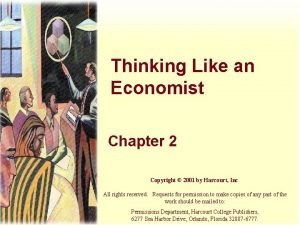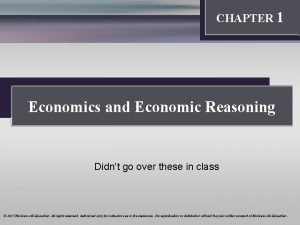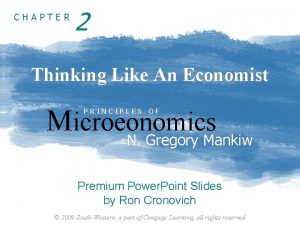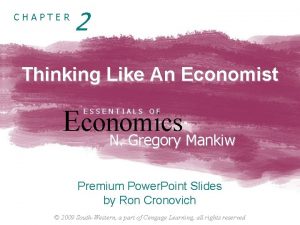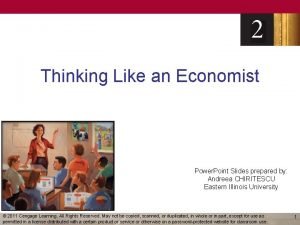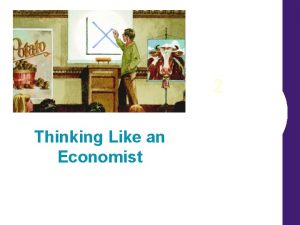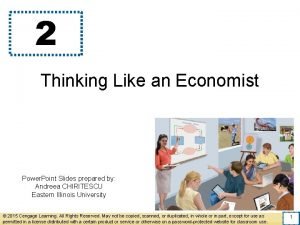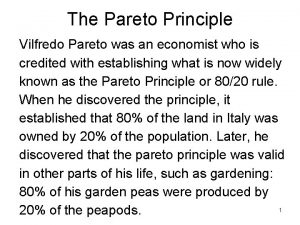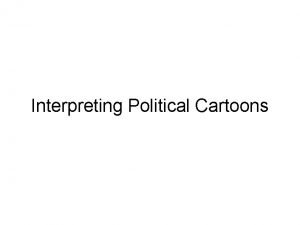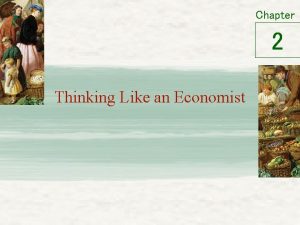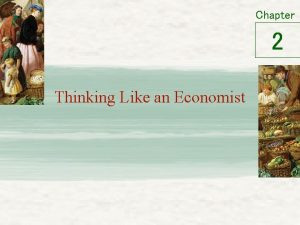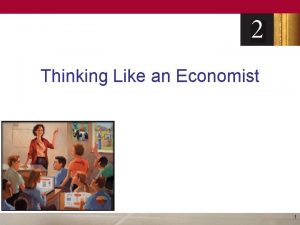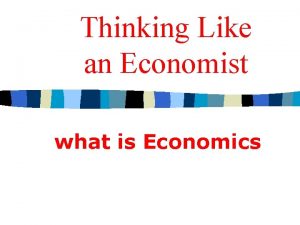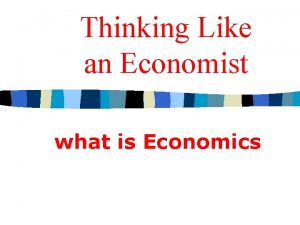Introduction Thinking Like an Economist CHAPTER 1 Economics








- Slides: 8

Introduction: Thinking Like an Economist CHAPTER 1 Economics and Economic Reasoning Didn’t go over these in class © 2017 Mc. Graw-Hill Education. All rights reserved. Authorized only for instructor use in the classroom. No reproduction or distribution without the prior written consent of Mc. Graw-Hill Education. 1

Economic, Social, and Political Forces Ø What happens in society can be seen as a reaction to, and interaction of: • Economic forces • Social forces • Political forces Ø Social and political forces influence market forces Ø Social and political forces often work together against the invisible hand © 2017 Mc. Graw-Hill Education. All Rights Reserved. 2

Using Economic Insights Ø Theories tie together economists’ terminology and knowledge about economic institutions Ø Theories are too abstract to apply in specific cases and are often embodied in economic models and principles • An economic model is a framework that places the generalized insights of theory in a more specific contextual setting • An economic principle is a commonly held insight stated as a law or general assumption © 2017 Mc. Graw-Hill Education. All Rights Reserved. 3

Using Economic Insights Ø Theories, models, and principles are continually tested to see of the predictions of the model match the data • Models lead to… • theorems (propositions that are logically true based on the assumptions of the model)… • arrive at policy precepts (policy rules that conclude that a particular course of action is preferable) • These theorems must be combined with knowledge of real-world economic institutions and value judgments to determine economic goals for society © 2017 Mc. Graw-Hill Education. All Rights Reserved. 4

The Invisible Hand Theory Ø According to the invisible hand theory, a market economy, through the price mechanism, will allocate resources efficiently • Price has a tendency to fall when quantity supplied is greater than quantity demanded • Price has a tendency to rise when the quantity demanded is greater than the quantity supplied Ø Efficiency - achieving a goal as cheaply as possible © 2017 Mc. Graw-Hill Education. All Rights Reserved. 5

Economic Institutions Ø To apply economic theory to reality, you've got to have a sense of economic institutions Ø Economic institutions are laws, common practices, and organizations in a society that affect the economy Ø Economic institutions differ significantly among nations Ø They sometimes seem to operate differently than economic theory predicts © 2017 Mc. Graw-Hill Education. All Rights Reserved. 6

Economic Policy Options Ø Economic policies are actions (or inaction) taken by the government to influence economic actions Ø Objective policy analysis keeps value judgments separate from the analysis Ø Subjective policy analysis reflects the analyst’s views of how things should be © 2017 Mc. Graw-Hill Education. All Rights Reserved. 7

Economic Policy Options Ø To distinguish between objective and subjective analysis, economics is divided into three categories 1. Positive economics is the study of what is 2. Normative economics is the study of what should be 3. Art of economics is using the knowledge of positive economics to achieve the goals determined in normative economics © 2017 Mc. Graw-Hill Education. All Rights Reserved. 8
 Thinking like an economist chapter 2
Thinking like an economist chapter 2 Thinking like an economist chapter 1
Thinking like an economist chapter 1 Thinking like an economist chapter 2
Thinking like an economist chapter 2 Chapter 2 thinking like an economist
Chapter 2 thinking like an economist Thinking like an economist chapter 2
Thinking like an economist chapter 2 Thinking like an economist summary
Thinking like an economist summary Thinking like an economist ppt
Thinking like an economist ppt Vilfredo pareto
Vilfredo pareto A wise economist asks a question analysis
A wise economist asks a question analysis
